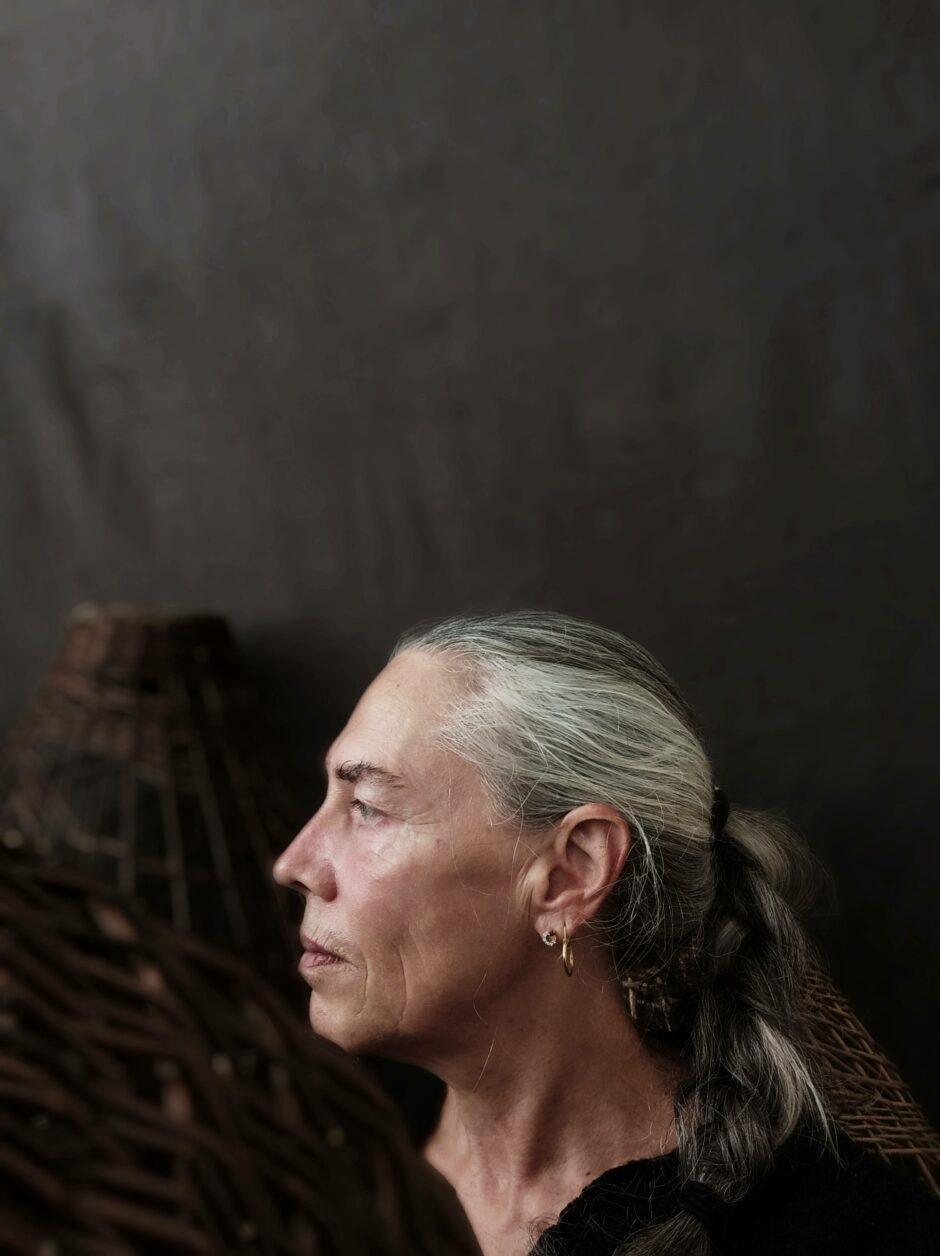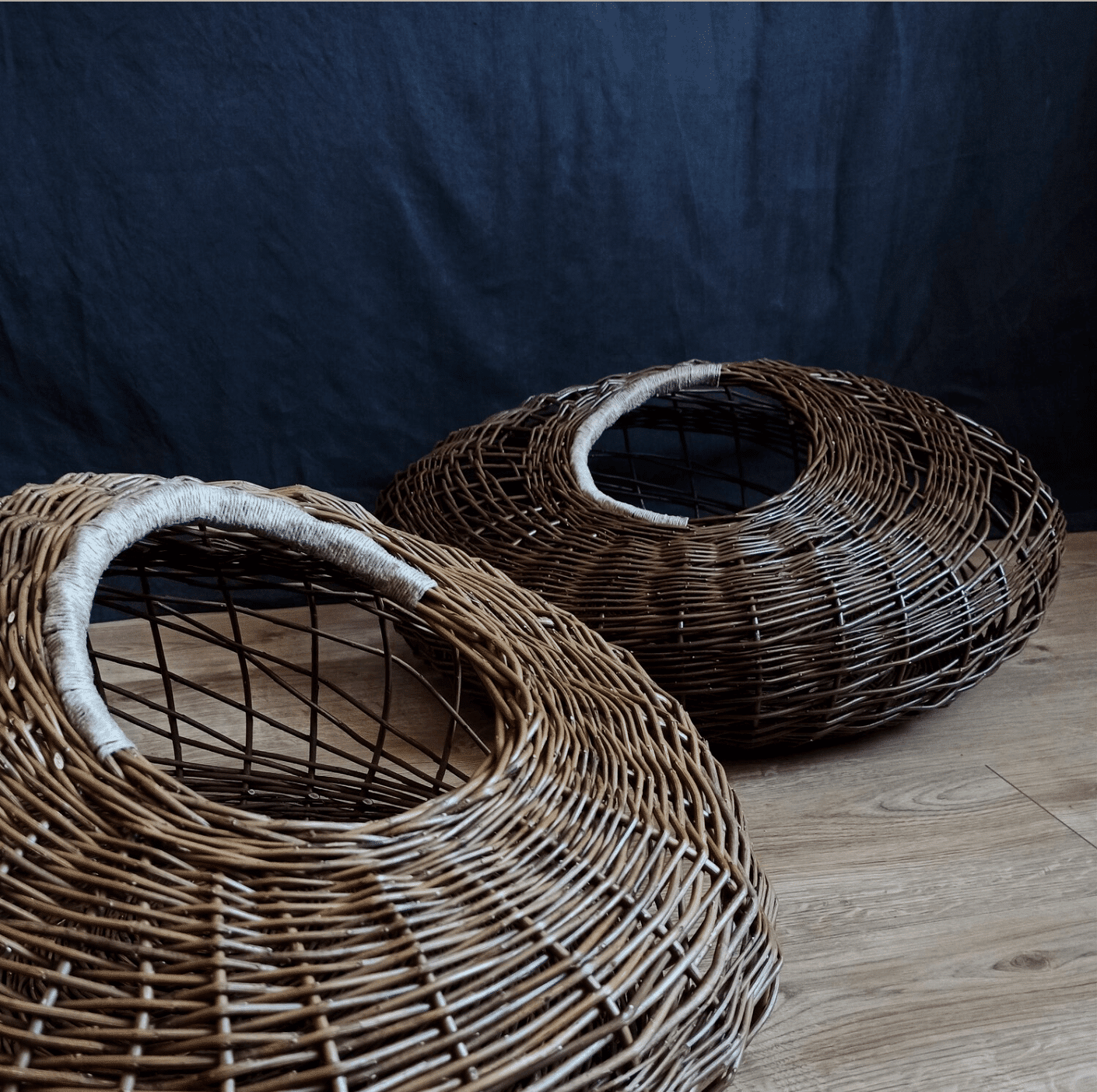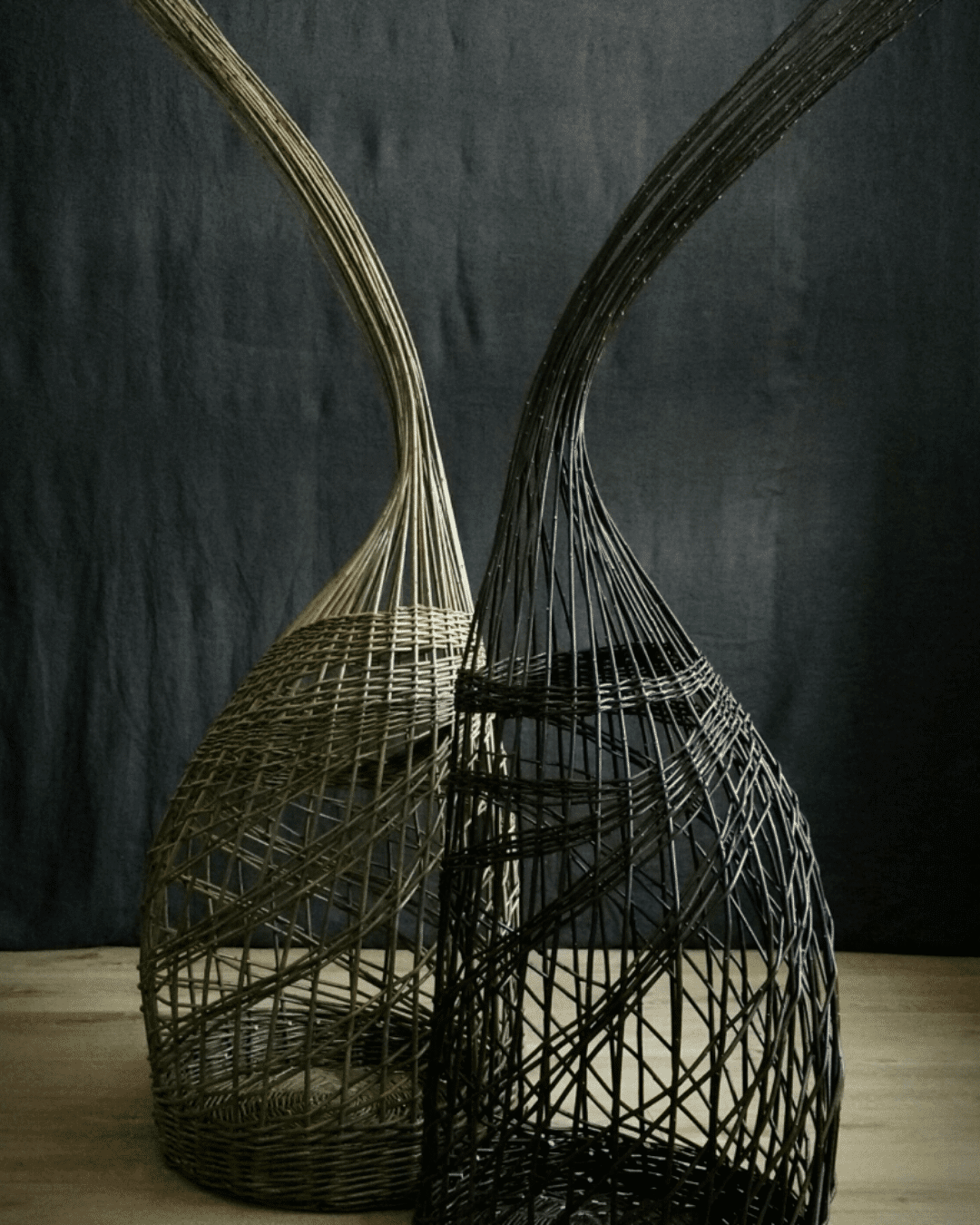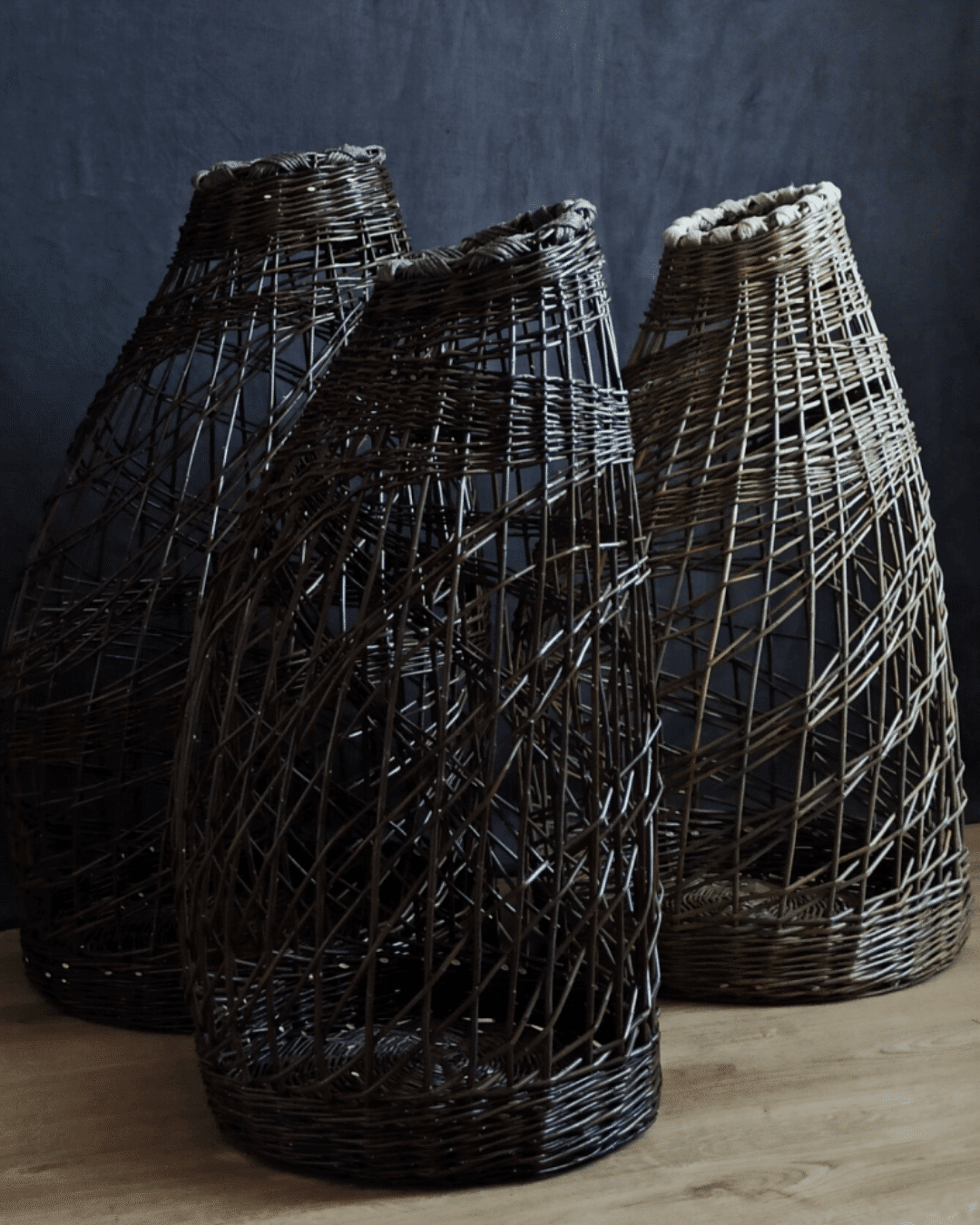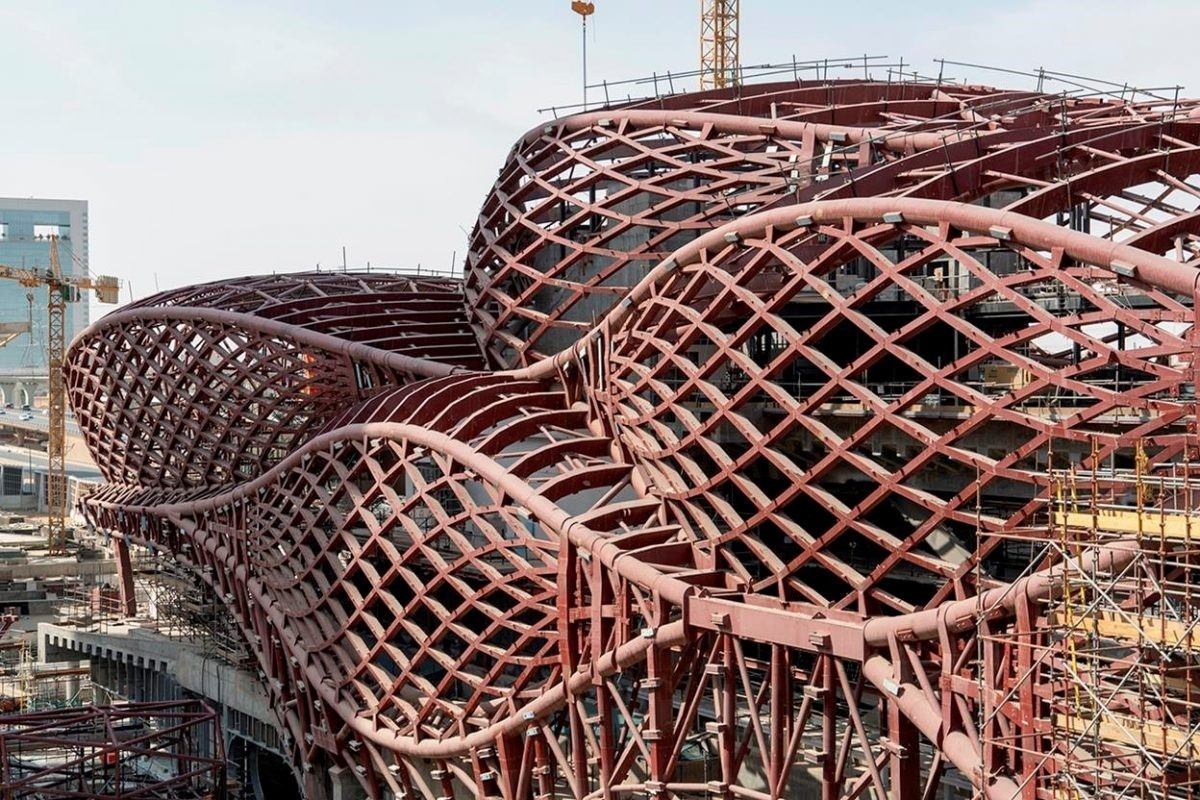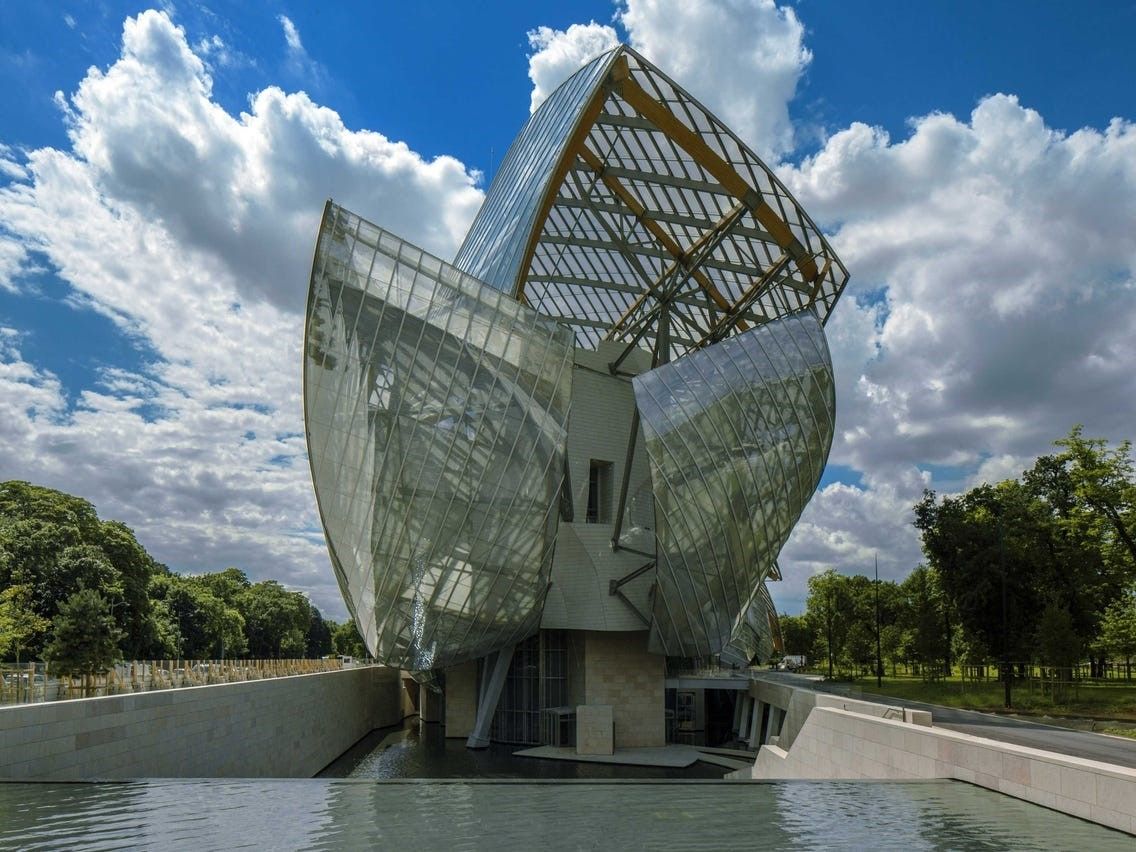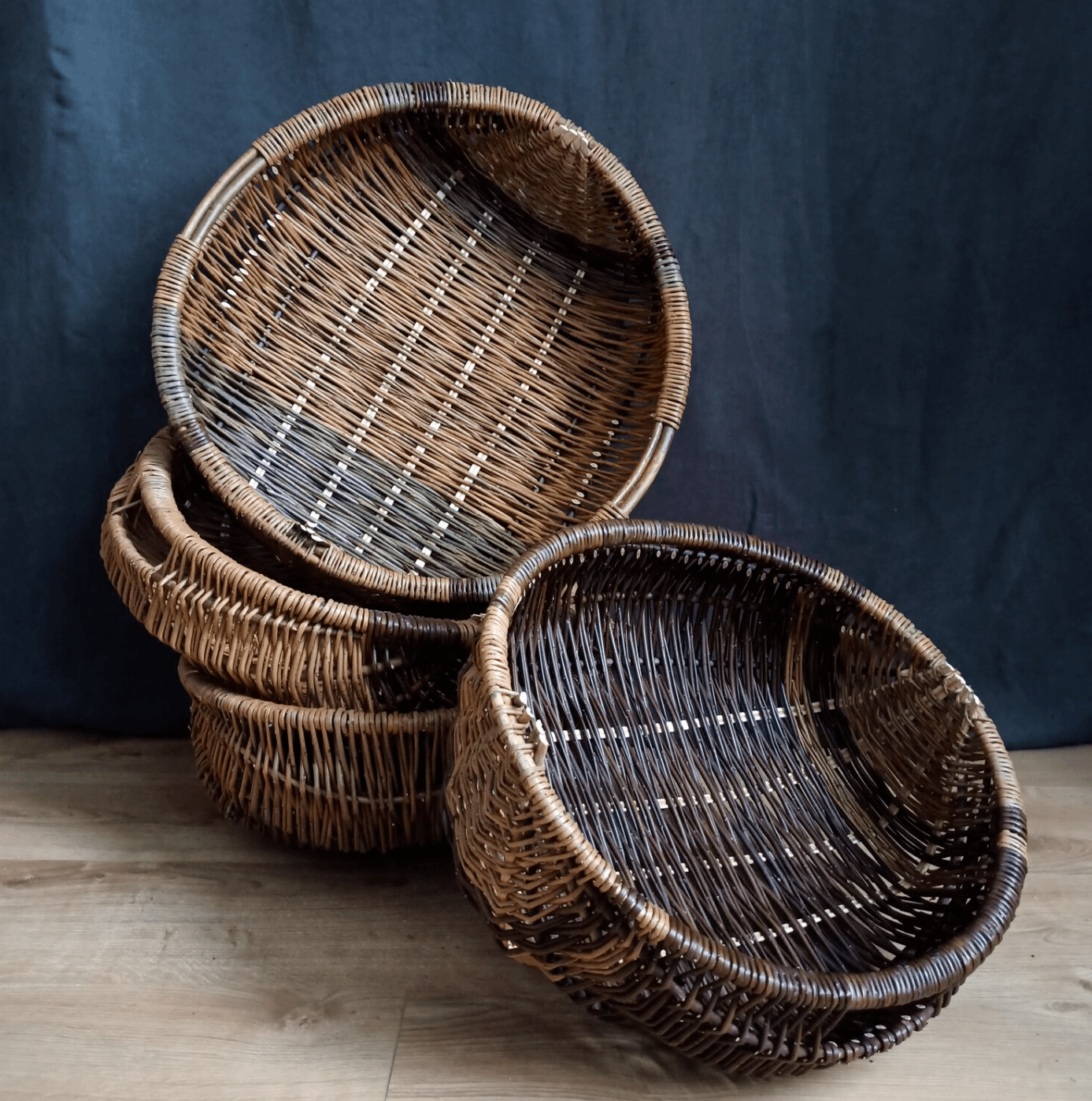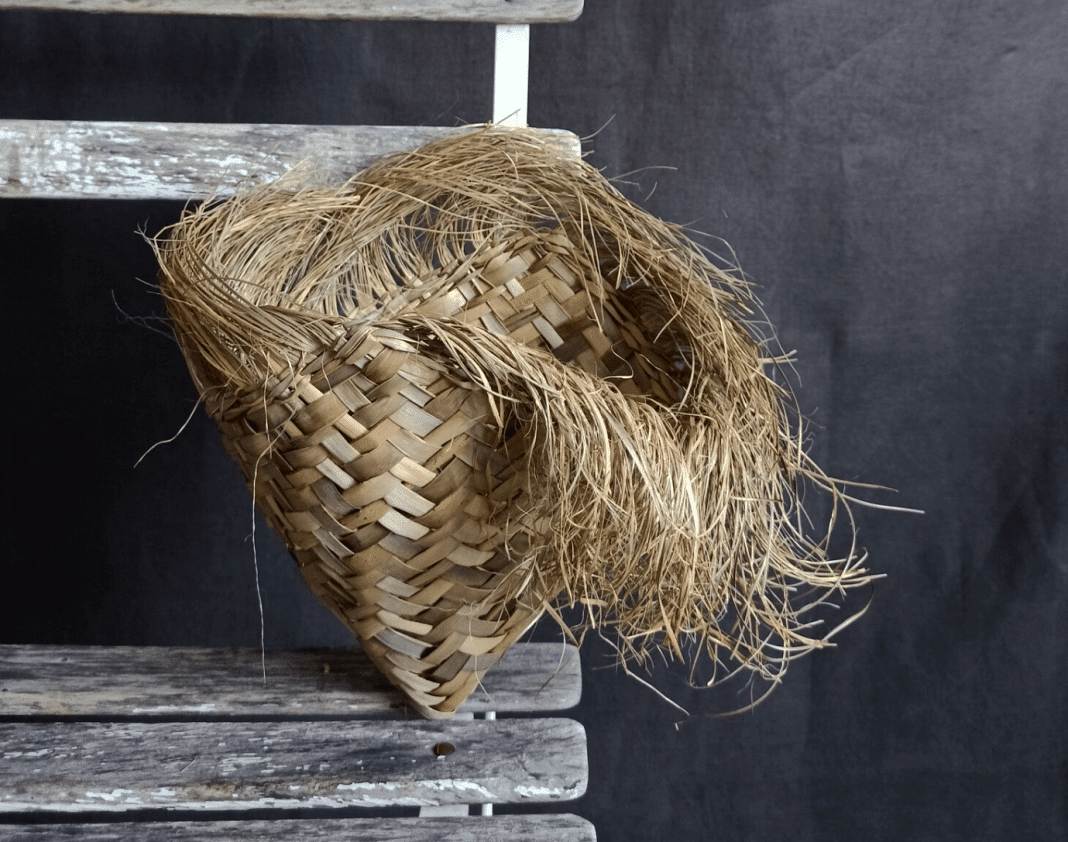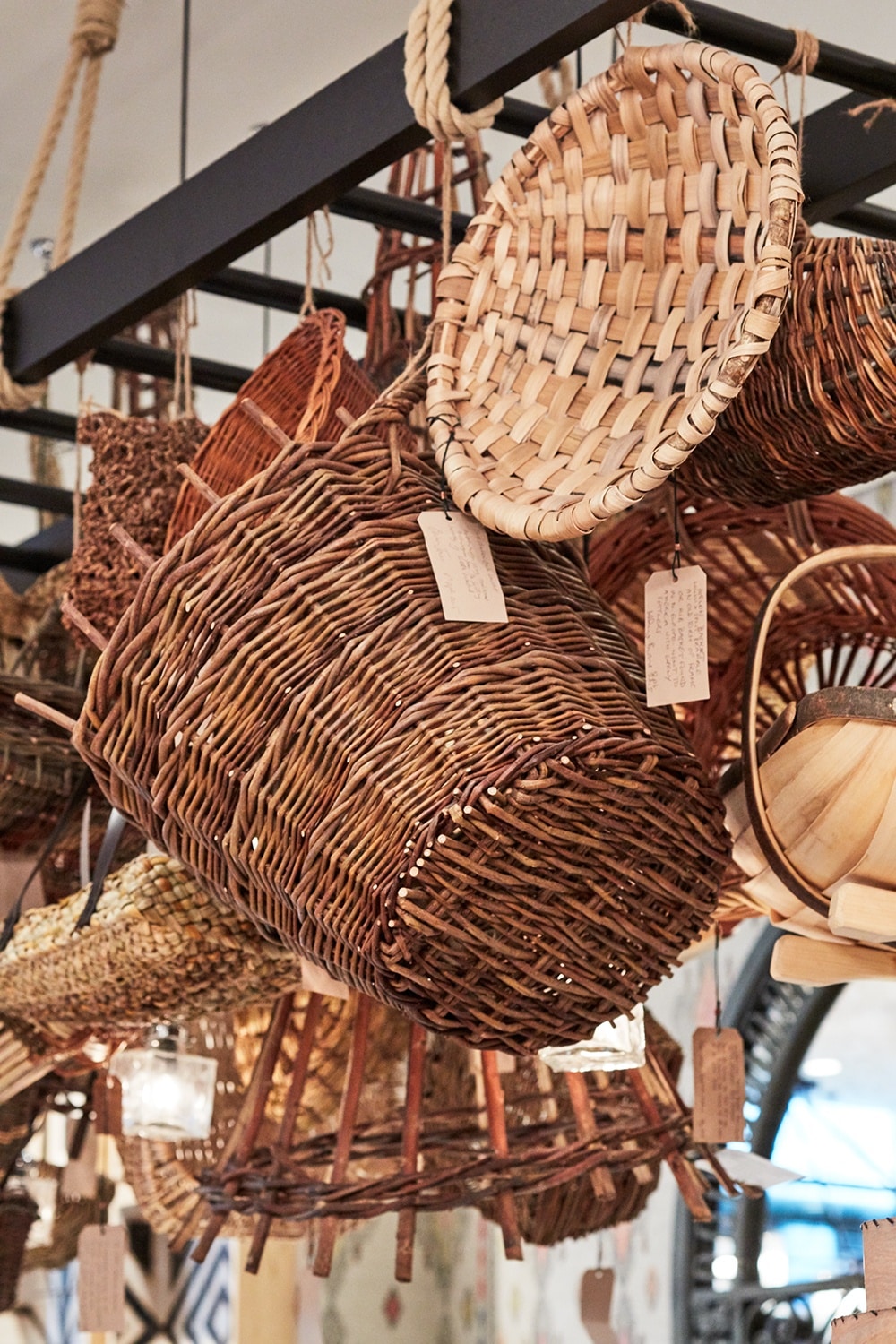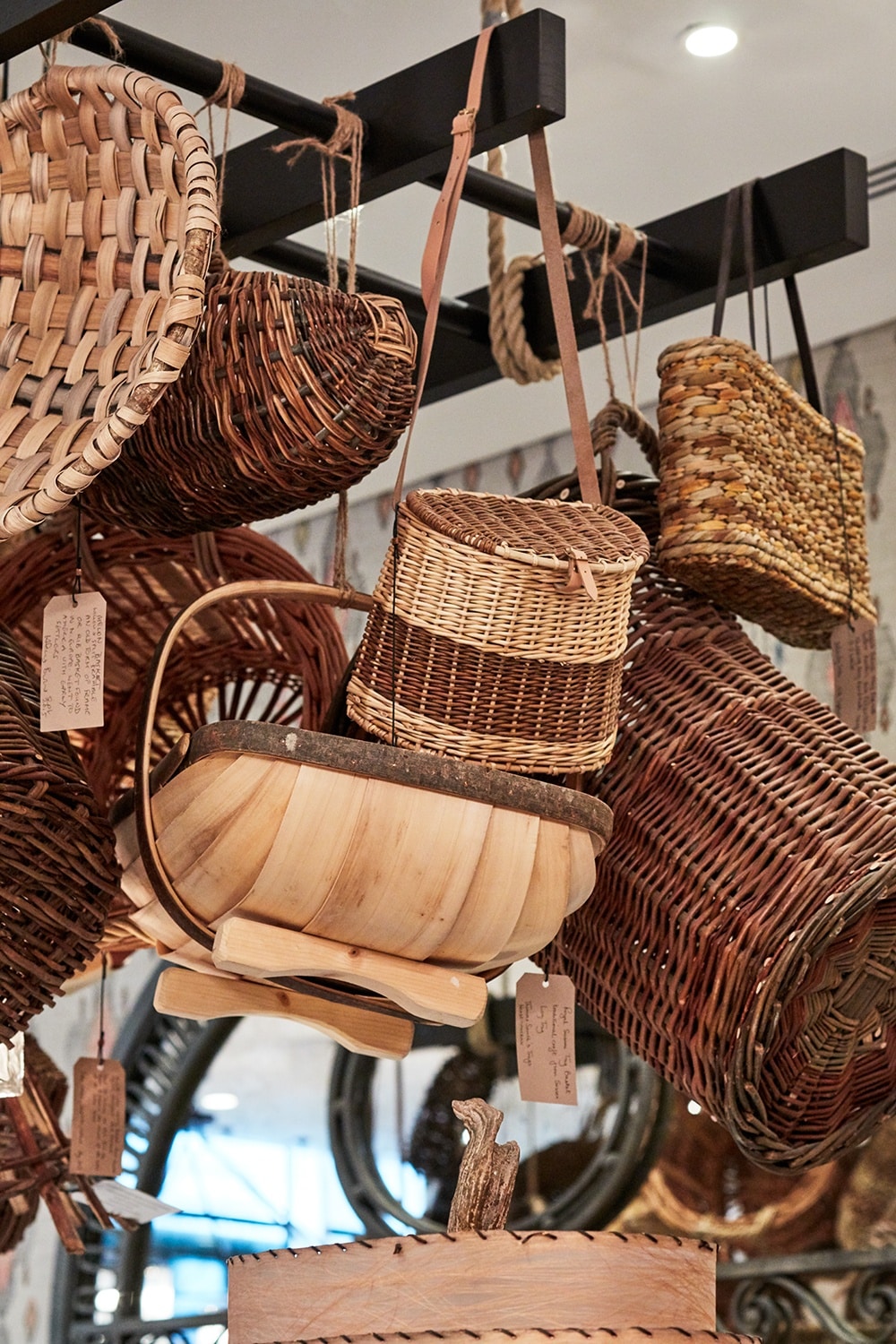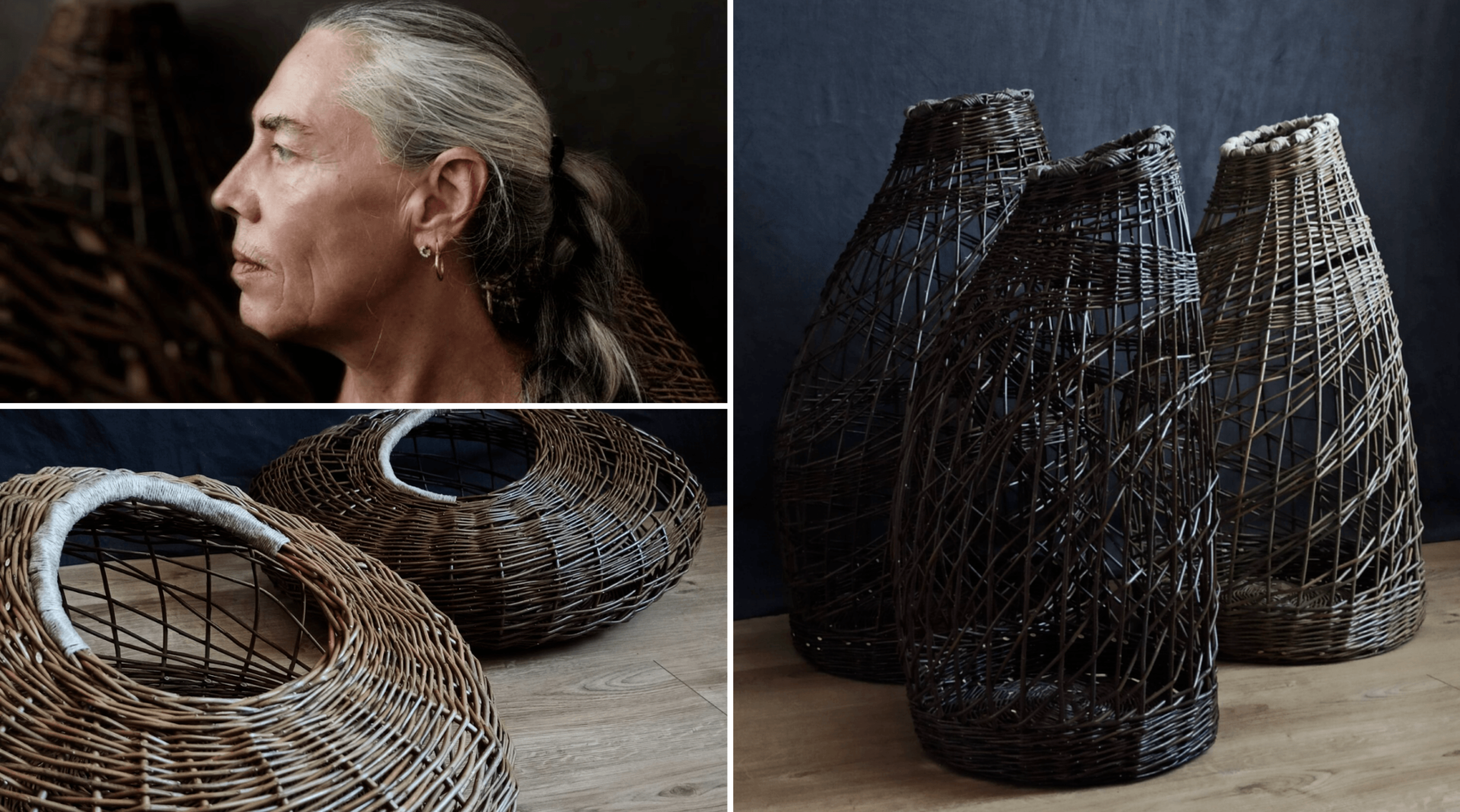
Meet the Maker: Patrizia Sascor
Meet the MakerPatrizia Sascor is an Italian basket weaver and former ceramicist. She weaves sculptural contemporary pieces in willow, makes rush seats and mid-century design chairs in Danish cord. She expresses the energy and dynamism of nature within minimal structures often using only the line of the willow branches. Join us as we meet the maker...
Patrizia Sascor is an Italian basket weaver and former ceramicist. She weaves sculptural contemporary pieces in willow, makes rush seats and mid-century design chairs in Danish cord. She expresses the energy and dynamism of nature within minimal structures often using only the line of the willow branches. We popped down to her studios in Deptford, London to have a chat and see her wonderful work. Join us as we meet the maker…
1. What made you move to the UK?
I came to England in 2013 to collaborate as a design coordinator. This was for the construction of a twelve-foot yurt in an eighteenth century walled garden in Devon. After completion of that exciting project I decided to be in London for a while, not foreseeing that my stay would have lasted for 9 years, up to now! What happened then is that I discovered I could study basketry, an old desire of mine, which I couldn’t fulfil while in Italy. I went for it without a second thought. I welcomed the opportunity to continue my search for the beauty of different forms and new mediums. I wanted to find something that required less tools and apparatus than ceramics.
3. What are you inspired by?
My creative influences are diverse. I observe the natural world with its seeds and plants, but I’m also drawn to the apparent simplicity of Japanese aesthetics with its use of meaningful materials and unpretentious forms. I’m enchanted by the fluid, curvy lines championed by architects such as Zaha Hadid and Frank Ghery and I also love Italian furniture design for its neatness.
Coming to basketry, I admire the sculptural work of Laura Ellen Bacon and the work of my first teacher Annemarie O’ Sullivan. My work sits on the line between craft and sculpture. I love to shape inner spaces through the graphic quality of the lines that form a skeletal basket. I weave to hold the shape in place, while defining the outer space simultaneously and creating a sense of movement. I’m looking for beauty and I’m interested in expressing the energy and the dynamism of nature within minimal structures.
4. How did you begin basket weaving?
When I came to London I couldn’t resist the temptation to learn basketry as it was a very old desire of mine. I felt as though it was a natural following along my creative path. I worked mainly as a self-taught ceramicist from 2000 to 2012. That phase of great experimentation and spell-binding revelations deeply sharpened my personal sense of beauty and my understanding of volume, shaping and space. It also developed my interest and sensitivity for materials. I think that period sowed the seeds of the current aesthetic of my basketry practice. Besides that, I prefer to live with very few possessions as my feeling is that of being on a journey, both artistic and physical. I like to think that I could move nimbly if I decided and find it very reassuring to be able to work with just a few tools, water and wood sticks. I trained for almost three years at Citylit, in London and attended numerous workshops with a number of celebrated English masters.
5. How does your design process begin?
I often use sketch books as a visual record of my observations and experiments to develop new ideas. I also elaborate ideas in my mind. When I start a piece, I usually have a clear idea of where I am heading to. Willow comes in a variety of lengths and weights which can’t be used in an interchangeable way. Every part of a basket needs a different thickness and the material needs to be soaked days in advance. You have to plan what you need and when because even the time of soaking differs according to the thickness of the rods.
2. Can you tell us a bit about the woods, willows and grasses you use in your practice and how they differ?
Since I started, I learned a panorama of basketry styles and techniques and I experimented with soft fibres such as rush, cordyline, banana leaves, grass, hemp and flax. London’s gardens and parks offer a great opportunity for foraging unusual plants, you just need to wait for the pruning season and ask permission to take some. I also cut the rush from rivers from time to time. Each material wants to be treated differently, some need to be soaked and some are used dry. Some are springy and others are soft and docile. Being aware of the limit you can’t push beyond takes time. I proceed by trial and error and when I happen to discover a new possibility, that’s my reward! I have also started to gather materials like wood, stones, shells and pieces of metal from the banks of the Thames. I find them visually inspiring and will use them soon or later. Willow is my favourite. The colourful beauty and scent of its rods are hard to resist. It is humble and unassuming but after soaking it for days, its stiffness transforms into suppleness and allows for extreme bending when handled with knowing gestures. The making process is simple and has a meditative slow rhythm which is for me, a great part of its charm. Willow is grown in the UK, so it’s very sustainable. My willow comes from Somerset Levels where there are large scale producers.
6. Basketry seems to be having a real moment. How do you push boundaries with your craft?
The recent popularity of basketry has certainly been triggered by greater public awareness for sustainability and by the desire of making, rediscovered during lockdowns. Now is a fantastic opportunity to revisit the craft through a more contemporary approach and one that could be of a greater interest to interior designers and a young generation of makers. Having trained in traditional basketry, I now want to contribute to its contemporary evolution towards the realms of art and design. I’d also like to change the common perception that sees it as mainly ‘humble and utilitarian’. Some of my baskets are included at the moment in a collective exhibition called ‘Nourish’ at Crafts Study Centre in Farnham. It well represents both tradition and innovation through the work of 16 professional basket makers from different areas of the UK.
7. What is your dream project?
I am afraid I have more than one! I would love to develop new collaborations with furniture designers and makers, sharing the same value of gentleness towards the environment I have embraced and produce an exclusive range of lasting contemporary objects for interiors that embed cross skills. I would also love to scale up the size of my work to create one-off sculptural pieces for exhibitions and public venues, informed by basketry techniques and a mixed media approach, integrating different materials into the structure of my baskets.
8. Congratulations! This year you won the Queen Elizabeth Scholarship Scholarship Trust (QEST) 2022. What do you think this will mean for your practice?
I am honoured and thoroughly excited by the opportunities the Scholarship is opening for me. I will have the chance to study further, on a one-to-one basis with some of the greatest basket makers working in the UK and I will also approach new materials like leather. Being part of QEST’s creative family means easier connections with other great makers in all fields, to develop work and new opportunities. My next few months will be incredibly busy and interesting.
We are so excited to see how Patrizia will develop her extraordinary creations. Thank you for joining us and ‘meeting the maker’. Stay in touch with her projects here or on Instagram @nestandnet
For more inspiration, visit our blog post Baskets of Britain.

